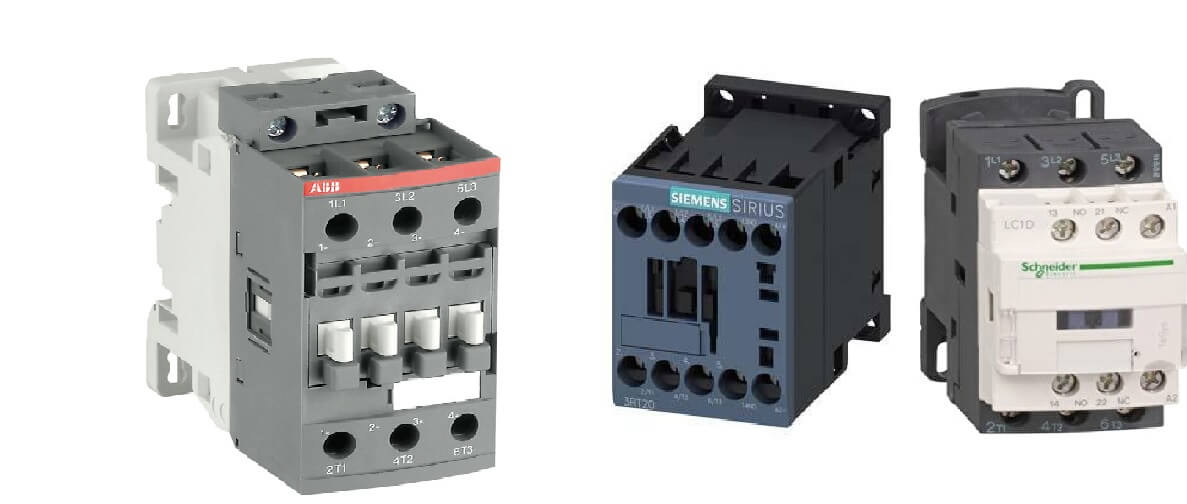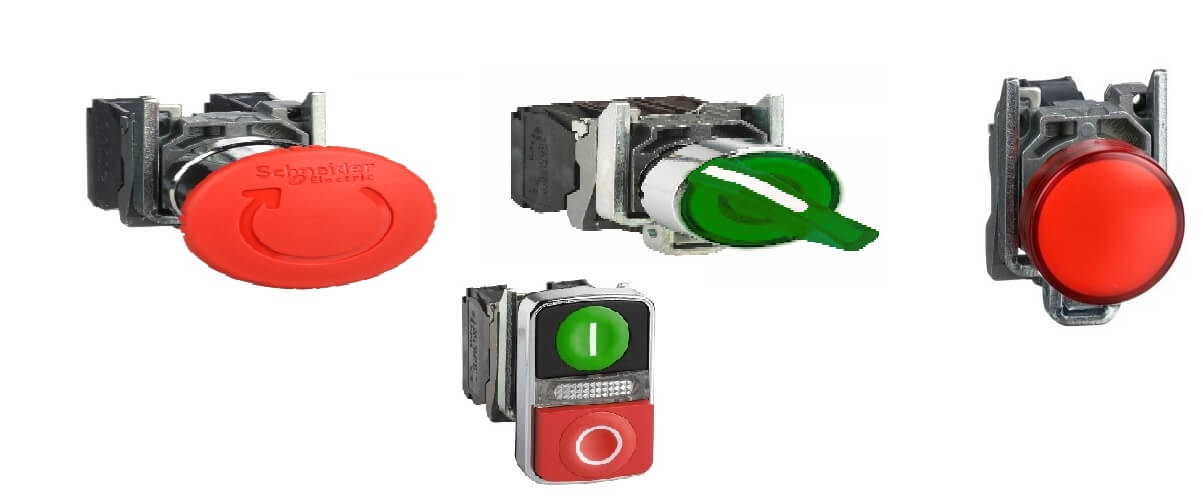SWITCHING MATERIALS
Switchgear is a term used to describe electrical equipment specially designed to protect the electrical system from high voltage. There are a variety of switching devices, including circuit breakers, circuit breakers, fuses, and disconnectors. It can be divided into two parts, switches and fuses. Switches are devices that control the flow of electricity through circuits. Fuses are safety devices that blow when too much current flows through them. There are many different types of switches used in industrial environments, residential environments and even at home. They can be mechanical, electro-mechanical, electronic or semiconductor based. Switchgears are often used to protect power systems from damage caused by high voltages, short circuits, overcurrents, or other dangerous conditions.
There are three basic types of switchgear:
Automatic Transfer Switches (ATS)
An automatic transfer switch (ATS) is a device that automatically transfers power from one circuit to another when current is interrupted in the first circuit. ATSs, electric motors, heaters, air conditioners etc. It is used to prevent critical loads from being damaged by overload conditions. In this case, the ATS detects the overcurrent condition and turns off the load immediately. This can save your equipment if not properly protected.
How do they work? The basic principle behind the automatic transfer switch is simple. The primary system supplies power to the secondary system, while the secondary system remains isolated from the primary system. When the primary system is powered down, the secondary system connects to the primary and supplies power to the load.
Why do we need them? There are many reasons why we should use them. One reason is because they can increase the security of your home or business. Another reason is that they can help reduce energy costs. And finally, they can improve the reliability of your electrical system.
Automatic Circuit Breakers (ACB)
ACB is a device that automatically turns off the power supply of the circuit when a dangerous situation occurs. This is done by monitoring the voltage level of the current flowing through the circuit and turning off the power supply if the voltage drops below a certain threshold. A typical household circuit breaker has two settings; normally open and normally closed. When the switch opens, it should stay in this position until the current flow reaches a safe value. If the current exceeds a set limit, the breaker trips and opens the circuit. There are different types of automatic circuit breakers, but they all work the same. A control panel sends signals to the breaker telling what kind of condition it is. If the signal indicates a short circuit, overload, or overcurrent condition, the ACB is triggered. It turns on again when it detects that the state has changed. Most ACBs are equipped with both manual and automatic settings; this means you don't have to touch anything to turn them on or off.
Manual Switchgear (MSG)
Manual switchgear is a device that can handle a large amount of current. They are often used as overcurrent protection for other devices. MSG is a type of electrical switchgear that uses mechanical switches to control power instead of using electronic components such as fuses and circuit breakers. The primary reason for choosing manual switches is that they are much cheaper than electronic switches. This makes them perfect for industrial applications where cost is a key factor. They can also be used in residential environments if you want to install a circuit breaker box without access to electricity. Basically, the switch consists of two parts: the lever and the contactor. When the lever is moved, the contactor moves and connects or disconnects power.
As DCZ Elektrik, we retail, wholesale and export switchgear such as automatic fuses, contactors, motor protection switches, leakage current, button groups and compact switches.
Contactor

Contactors are used to protect electrical equipment from damage caused by overloading. It is designed to prevent electric current from flowing through a conductor if too much current is applied to a conductor. This prevents any damage to the equipment that would otherwise occur. Electrical contactors are used to control the current flowing through the circuits. They can be used to protect against overcurrent conditions, short circuit conditions and overloads. When a contactor detects an abnormal condition, it opens its contacts to prevent damage to equipment and protect people from injury. In addition to being able to switch AC or DC circuits, they can be configured to control the flow of energy into or out of a system.
Contactors can be used in many environments, including household appliances, industrial machinery, and automobiles.
Auto Insurance

A automatic fuse (MCB) is a type of electrical switch that can cut the electrical current flowing through its contacts when overheating occurs. This prevents damage to the protected circuit. The circuit breaker has three pins connected to each other. One pin is connected to ground. The second pin connects to VCC (Power). And the third pin is connected to GND. When it detects any voltage fluctuations, it triggers a relay to disconnect between the Arduino's power supply and the rest of the electronics. MCBs are typically designed to have a thermal rating of approximately 250 °C. In the context of power distribution, they are sometimes called line changeover switches. MCBs detect overcurrents and short circuits in both AC and DC systems. A typical MCB consists of a high-speed solid-state electronic switch, a magnetic core, a coil, a mechanical contact assembly, and a current sensor. In addition to their sensing capabilities, MCBs are also used to trip breakers and disconnect transformers from electrical circuits. They are also known as contactors, triacs.
Contactors can be used in many environments, including household appliances, industrial machinery, and automobiles.
Compact Switch

Compact switch The compact switch is an automatically operating current-limiting device to protect against overcurrent conditions. Its function is to limit the load current to a predetermined value. In this way, it can prevent damage caused by excessive currents. This type of switch is commonly used in applications where the power supply has high capacity.
Magnetic shielding Magnetic shielding is a technique based on the use of permanent magnets. These devices have been used since the beginning of time to protect people and objects from harmful effects. They consist of two components: a magnet and a ferromagnetic material. When the magnet moves away from the ferromagnetic material, the flow of electric current increases, causing the arc to extinguish. This type of switch can be mounted directly on the line or at any point along the line.
Control center Control center is a term used to describe a central location that controls the operation of equipment. A control center is usually located in a factory or warehouse. It consists of various elements, including a panel, a computer system, a communication network, and various sensors. All these elements work together to enable the operator to monitor and manage production processes.
Residual Current Circuit Breaker

Residual current circuit breakers are designed to protect people from electric shock if they come into contact with exposed live parts of an electrical infrastructure. They work by monitoring the amount of electricity flowing through electrical circuits and then interrupting that flow of electricity if too much is being drawn. There are many different types of residual current circuit breakers.
There are two types of residual current circuit breakers in use today: magnetic and thermal. Magnetic residual current circuit breakers (MRCB) are designed to detect any electrical leakage from switched off devices, while thermal residual current circuit breakers detect heat generated by electrical equipment. Both types of circuit breakers can be used in residential and commercial buildings. In fact, they were originally developed to protect people working with electrical appliances.
Magnetic Residual Current Circuit Breakers (MRCBs): MRCBs are designed to detect any electrical leakage from devices that have already been turned off. They consist of a metal core wound in coils of wire and a magnet that detects the flow of electrons in the wires. When the magnets detect a change in electrical charge, it triggers a tripping mechanism to open the circuit.
Thermal Residual Current Circuit Breakers (TRCBs): TRCBs are similar to MRCBs, but instead of using a magnet to sense electron flow, they use a heating element to sense the presence of heat. If enough heat is sensed, the TRCB activates. As a result, they are often used in large power transformers with high voltages and currents.
Button Groups

Buttons are a kind of electrical device that can turn something on or off. Switches are often used to control machines, appliances, and other devices. In terms of buttons, they are often used to activate a function or perform a specific action.
Instant Touch Button
The instant-tap button is a button that has no delay between pressing it and activating whatever its associated function. This type of button is often used in automated systems to prevent accidental activation. The instant touch button is a type of surface mounted pressure sensitive switch. These buttons have no moving parts and can change state only when touched. They do this with a rubber membrane and a conductive coating. These buttons are often needed where haptic feedback is required, such as control panels or digital interfaces.
Permanent Button
A permanent button is used for a machine without a start/stop function. These are usually mechanical switches designed to stay in the same position until manually reset. They can be used for any type of switch, but are most commonly used for low power applications such as motor starters.
Start Button
Pressing this button starts the machine. If the machine was started before the start button was pressed, pressing the stop button will restart the machine.
Stop Button
When pressed, this button stops the machine. If the stop button is pressed while the machine is running, the machine will shut down immediately.
Two Way Button
In addition to starting and stopping the machine, this button allows the user to turn the machine on and off without having to remove the cover from the control panel. Press the button twice to activate the bidirectional switch. Press the button once to disable the bidirectional switch.
